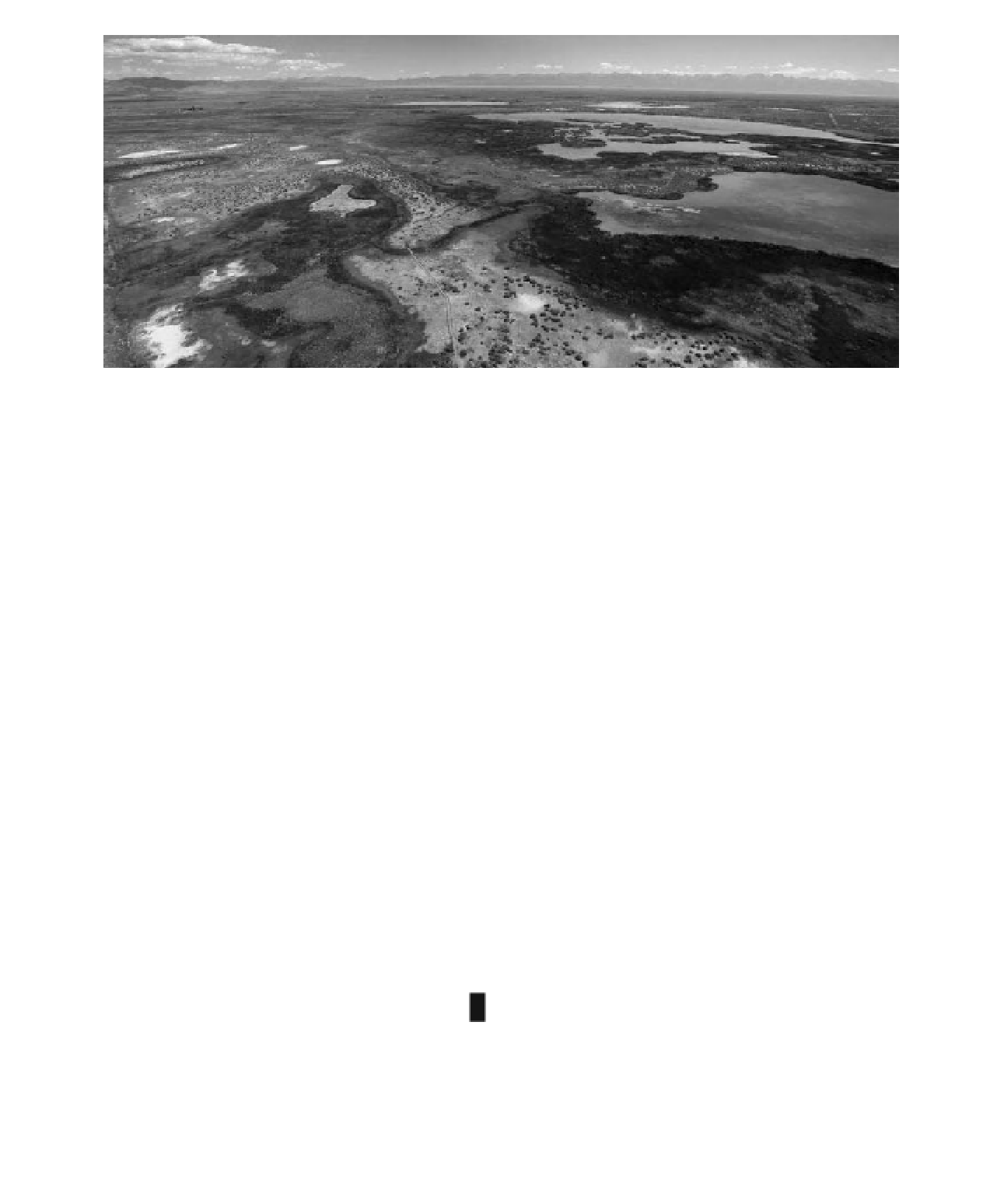Geoscience Reference
In-Depth Information
Figure 17-25.
Panorama of Russell Lakes State Wildlife Area looking toward the northeast with the Sangre de
Cristo Range in the far background; east to right, north to left. Saline lakes and marshes occupy hollows between
low, mesquite-covered dunes. Blimp aerial photo by S.W. Aber and J.S. Aber.
Figure 17-27.
Elevated wooden boardwalk (lower left)
and gravel path (center) for wildlife viewing at Russell
Lakes State Wildlife Area, Colorado. The position of an
observation platform is marked (*). Blimp airphoto by
S.W. Aber and J.S. Aber.
Figure 17-26.
Close-up view of a pool at Russell Lakes
State Wildlife Area (see Color Plate 17-26). Dark green
emergent vegetation is mainly bulrush, and algae forms
a mat on water surface. Blood-red patches presumably
rel ect carotenoid pigments of invertebrates in saline
water. Blimp aerial photo by S.W. Aber and J.S. Aber.
Intergovernmental Panel on Climate Change
(IPCC) suggested that the changes witnessed in
these regions would be far reaching and drive
feedback loops of global consequence (Anisi-
mov et al. 2007). The average surface tempera-
tures in the Arctic over the past 20 to 40 years
have increased at a greater rate than the global
average (McBean et al. 2005). This has been
accompanied by a reduction in the extent of sea
ice and permafrost (Anisimov et al. 2007). Such
processes could potentially have regional and
February 15 through July 15 during the water-
fowl breeding season.
17.4 The Arctic
Anticipated impacts of rapid climate change
during the next century are expected to have
a substantial inl uence on the polar regions
of the world. The most recent report of the







